Words With: Cone Shape Top
Bay Area-Philly-NYC rave history, hiddenness vis-à-vis intentionality, artistic collaboration, community building, alternative commerce.

When I was conceiving this publication, the choice for my first interview came to me immediately: Cat Lauigan (she/her) and Matt Brownell (they/them), who together co-founded Cone Shape Top, an Oakland-based performance space, DIY book-record-zine shop, and art gallery—which also happens to be their home. I first met the pair during peak lockdown, probably mid-2021, the first new friends I had made after at least a year of nearly-total social blackout, and quickly discovered that Cone Shape Top was the nexus point for a new wave of left-field art and music in the Bay Area.
They graciously agreed to my interview request, and early in June, we spoke at length inside Cone Shape Top. The following is an edited transcript of our conversation.
Matt Brownell
I was born in Philadelphia. We lived there until I was about 12 years old, and then moved to Connecticut. My formative teen years were in Connecticut, which is where I was introduced to music community and DIY stuff through punk and hardcore when I was a teenager. I went to a new school and met some kids who were, you know, the freaks—they introduced me to music, made tapes for me, and then some older kids at school took me under their wing and brought me to my first shows and all that.
I had a good group of friends, and we would play music together. This was around the late '90s—so raving was happening in the U.S., stuff like MTV's Amp, Crystal Method and Chemical Brothers, The Prodigy. Two of the kids in that band were also super into electronic music, going to raves and concerts, and even buying synthesizers, which at the time I didn't really relate to, but we'd practice music at this one friend's house, and he had a set of turntables. He was learning how to DJ, and that caught my eye. But what really flipped things was a CD by Anabolic Frolic, Happy 2b Hardcore, which seems strange, but it flipped this perspective for me, where I was understanding music in this way of energy release, and intensity, and things like that. All that music, punk and hardcore, had an angry 'disaffected youth' vibe to it, which makes sense to a teenager, feeling like you don't fit in.
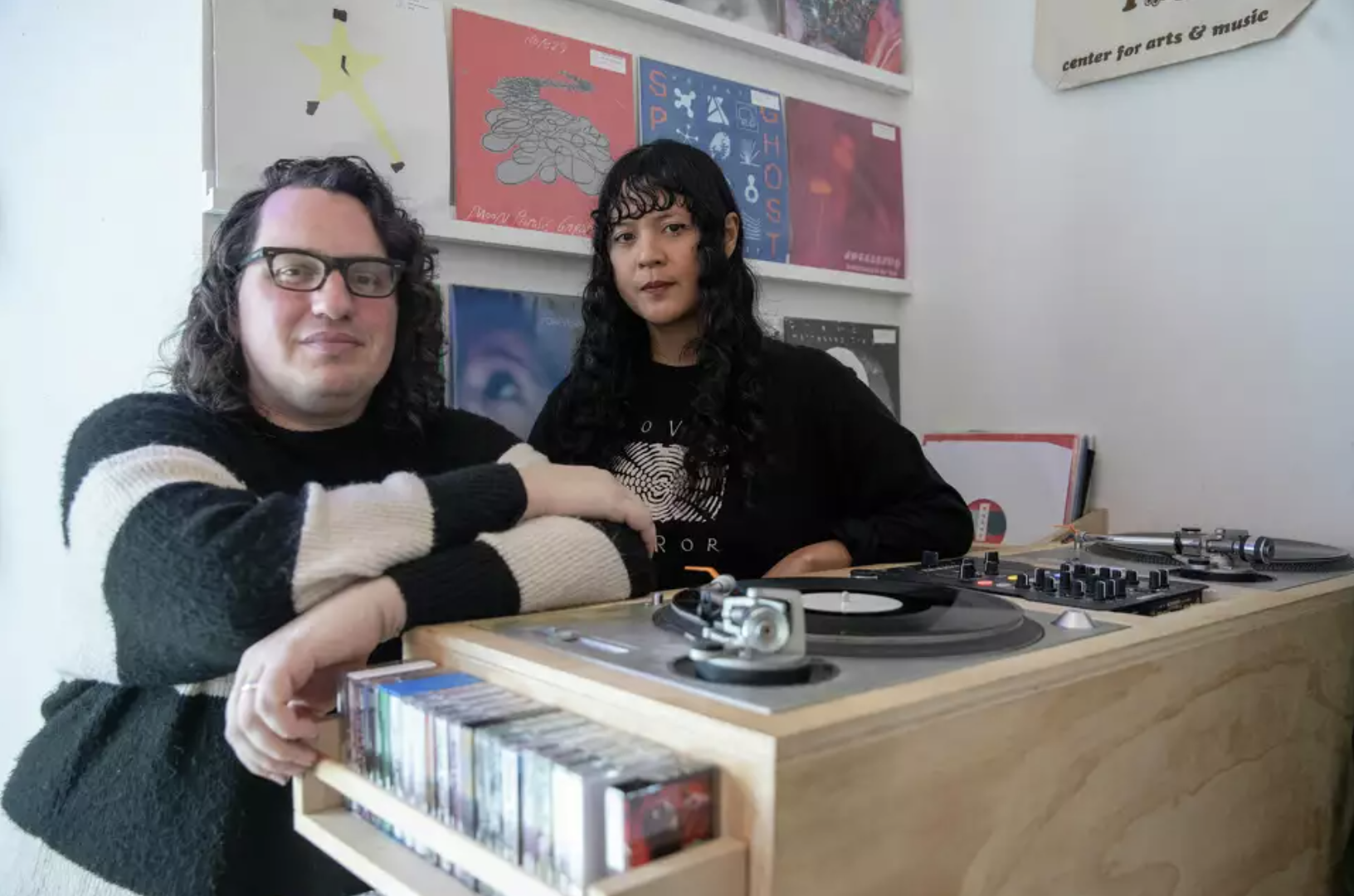
Matt Brownell
But then I hear this other music that also has this intensity and release and energy, with this positive aspect—I mean, extremely positive. But it made sense to me, and struck me in this way, and it flipped me. I started listening to my friends' records, and I started playing around on the turntables. Then something snapped, and I was like, I have to get turntables. I started buying records, anything I could find, different genres, trying to figure out what made sense, trying to figure out how to put it together.
When I moved to Philadelphia for college, I went there as basically a changed person, with my record collection, my turntables. In Philly, I'd go to record stores every week. I'd start to get to know people there, and a bunch of the folks who worked there were DJing around town and giving the best parties, so I'd go to the party on Friday and hear them play all the new records, and then go down to the store on Saturday and be like, What was this one?
In 2005, I moved to New York, and that was a whole new chapter, meeting folks and getting into new DJ crews. I started digging for records more broadly, and looking more into the roots of dance music, learning how there's so much rich history and so much to process. In New York, the music is all there. The records are all there. The history, the knowledge, the people, the elders, the folks who started it are still there. You know, I was jockeying for position at the WFMU record fair dollar bins with Danny Krivit, things like that. So much knowledge and so much experience to share in that place, it was wild.
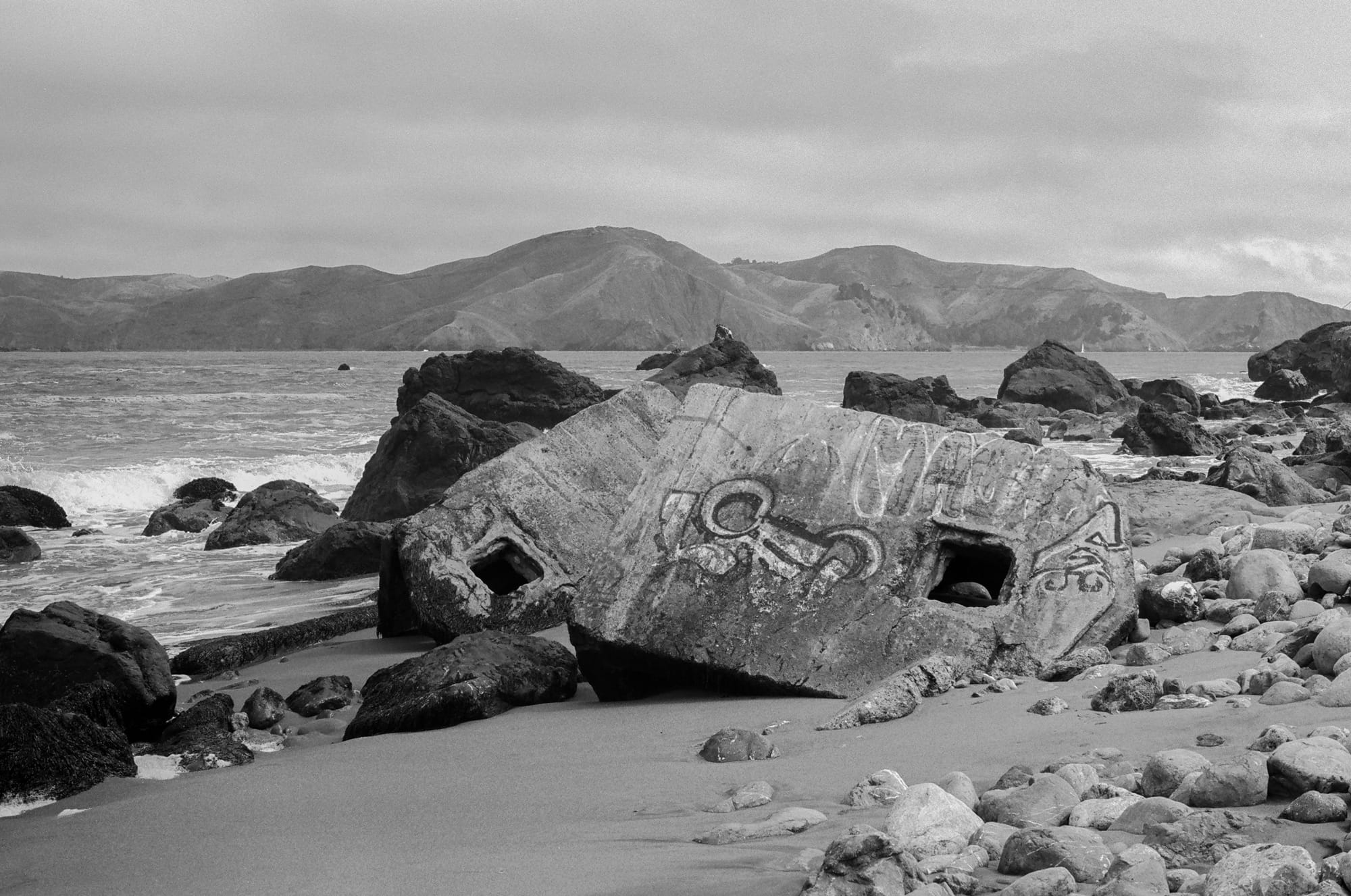
Matt Brownell
And that's where I met Cat, in New York, and I would consider that another turning point, where I feel like my thinking about DJing and music had all been in a certain zone, but meeting Cat, she introduced me to more experimental music and more ambient sounds. That was a big shift for me, and I feel like that was the starting point for where we are now: musically, creatively, partnership-wise, everything.
Cat Lauigan
I grew up here in the Bay. I was born in Paris, but my family came out here and landed in San Francisco when I was five years old. Soon after, my dad ended up moving into my grandmother's house in East Oakland. Most of my upbringing was in East Oakland up until senior year in high school, when my mom had moved to San Leandro, so I was an East Bay girl. That's where I hung out. That's where I felt really rooted.
In 1999, I went to my first rave, in senior year of high school. It was right before my parents had split up, so we were still living in the East Oakland house, and I was on Hegenberger, right up the street from Home Base. One night, one of my friends said, There's a rave that my friend told me about and we should go, but I think you have to tell your mom that you're sleeping over at my house. It sounds like we're gonna, you know, stay out all night. And so she tells me, Okay, we have to dress a certain way.
So I go over to her house and I'm wearing these yellow Adidas track pants and this short tank top and baseball cap, and she bought all this glitter, and she's like, We should put glitter all over our bodies, because I hear people really like to put glitter on themselves at raves. Our tickets were about five bucks, but we had to bring canned food—which is kind of amazing to think about, mutual aid already happening back at that point in dance music spaces. So we went, and we had to go through the Denny's parking lot, walk up to this line that was behind Home Base, and I just remember feeling really shook: just seeing a line of the most colorful bodies, fairy wings, fashion that I've never seen pushed to that level, and seeing so many people at that time of the night behind Home Base—it was the first time that I really felt like something was truly magical.
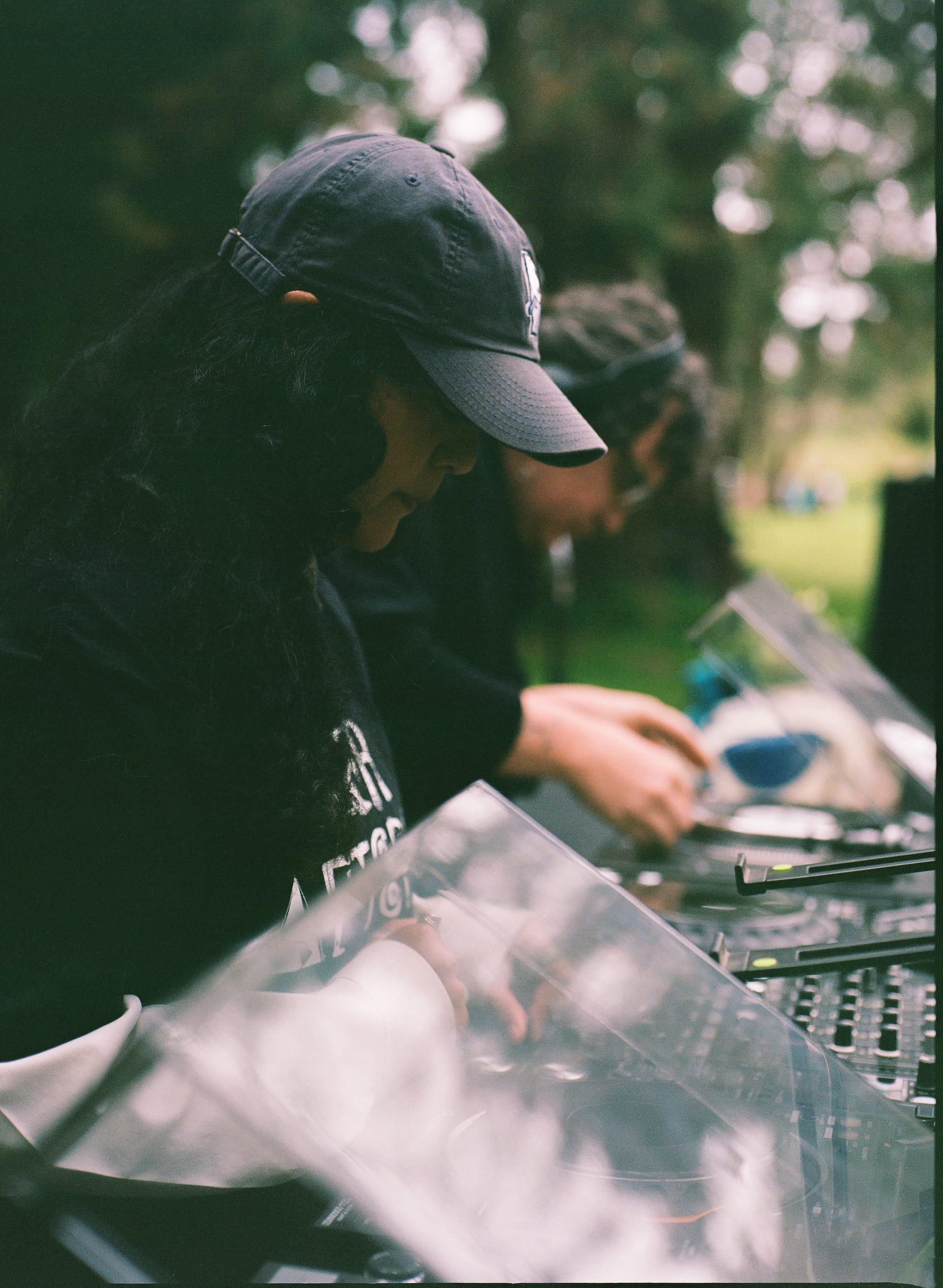
Cat Lauigan
As we got closer to the entrance, a feeling that really stuck with me was the reverberating sub, that started to kind of whisper out the "four/four" [beat]. And I remember feeling like, Whoa. It's music I had never heard before, and then hearing it so loud, I started to feel my adrenaline rush. I think I did ecstasy that night for the first time. The name of the party was called Love Affair. I think there were five rooms. It was huge. And this was just down the street from where I grew up.
I remember hearing DJ Aphrodite’s remix of Luniz "I Got 5 On It." That was a moment—it's in your DNA if you grew up in the Bay Area. It was a really good gateway for folks that were listening to rap and hip hop, and I remember seeing everybody in my immediate community there—at this point, this was probably the fourth or fifth wave of rave culture in the Bay. I saw people I went to elementary school with, people that I worked with. You saw everybody there, from all walks of life.
From that point on, I'd go to parties and raves every weekend, Friday and Saturday, for at least three years. I was also going to this other party called Eklectic. So I'd be out three times a week, not including going over to friends' houses and listening to music.
Eventually, I applied to Parsons in New York City and got in. I landed when Misshapes was kind of fizzling out. I remember catching some of the Wierd parties, and that was pivotal for me, because that's when I realized: Oh, I'm interested in dark sounds. I met Matt in the city when I was working as an art handler. When I met Matt, they kind of reignited my passion for dance music, and took me down this path toward deeper collections of house and disco.
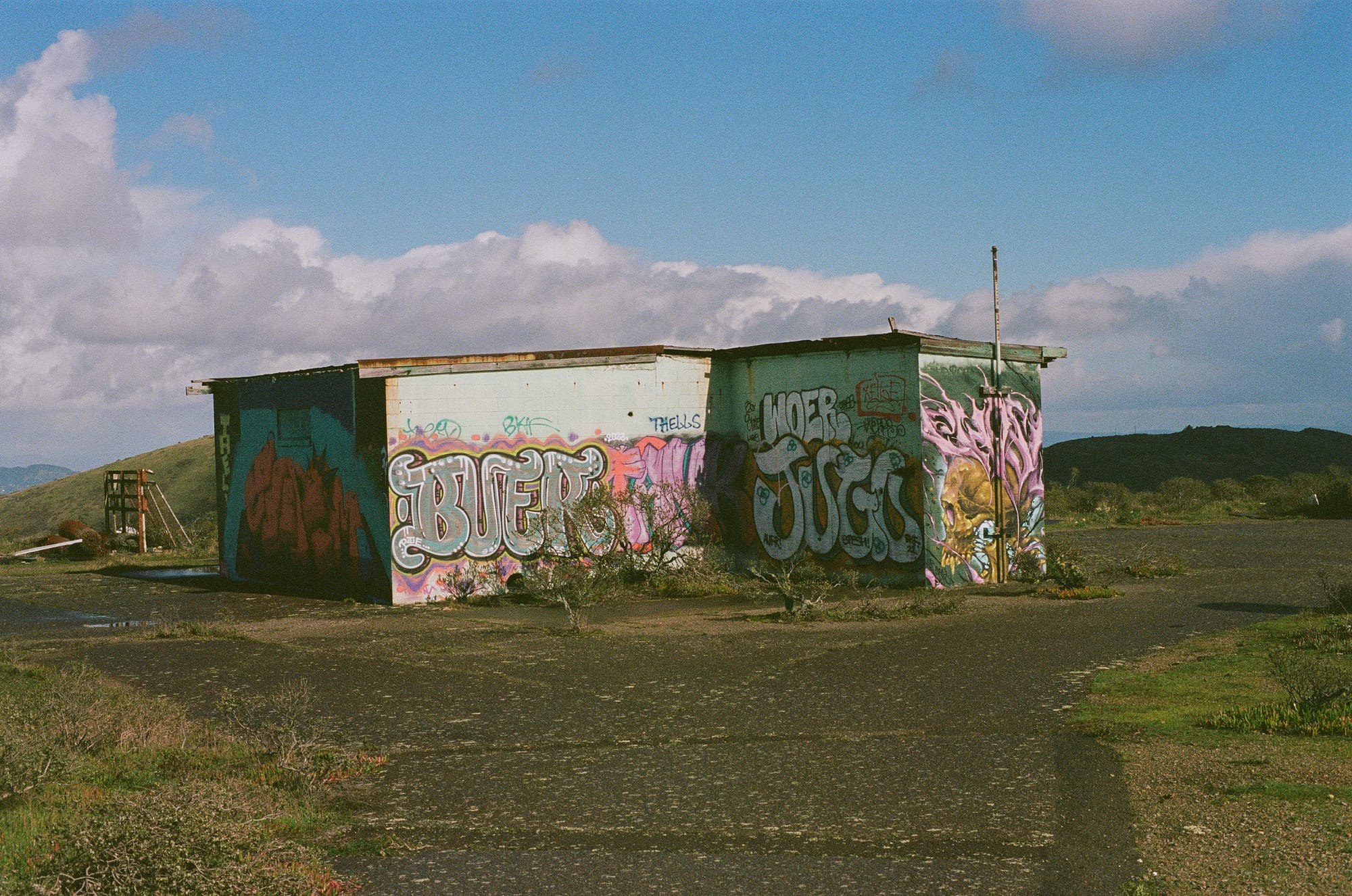
Matt Brownell
Cat and I started collaborating almost immediately. Back then, I had my own art practice that was regular and a big part of what I was doing at the time beside DJing, but it was always a solitary thing, and collaboration in an artistic sense had never really crossed my mind until I met Cat. When I saw her practice in which she approached art from a collaborative perspective, and how much it kind of expanded the language available to you and what you could accomplish, that was really eye opening.
Cat Lauigan
Not long after Matt and I met, our time living in New York was coming to an end, and we landed in LA. I was exploring solo artwork for the first time—I was creating wearable art garments, producing these collections of hand-sewn clothing. We lived in a back house in Silver Lake, and there was this tiny little alcove underneath the house. That's where my dye studio was. I was doing a lot of my natural dyeing projects there, and decided I needed a platform to showcase them.
The name came to me when I was looking for a rice paddy hat online—collecting images for archives of things that I liked, especially related to Filipino culture. The salakot is the rice paddy hat in the Philippines. I was searching for it online, trying to purchase one. I ran across this ad for a "cone shape top hat." It wasn't the hat I was looking for, but I loved the shape of this rice paddy hat so much. And so I wrote that down, and then thought, Oh, I'll call this platform I've been thinking of Cone Shape Top. I did free-form writing about what the phrase and the concept meant to me, and that basically became my thesis for this space.
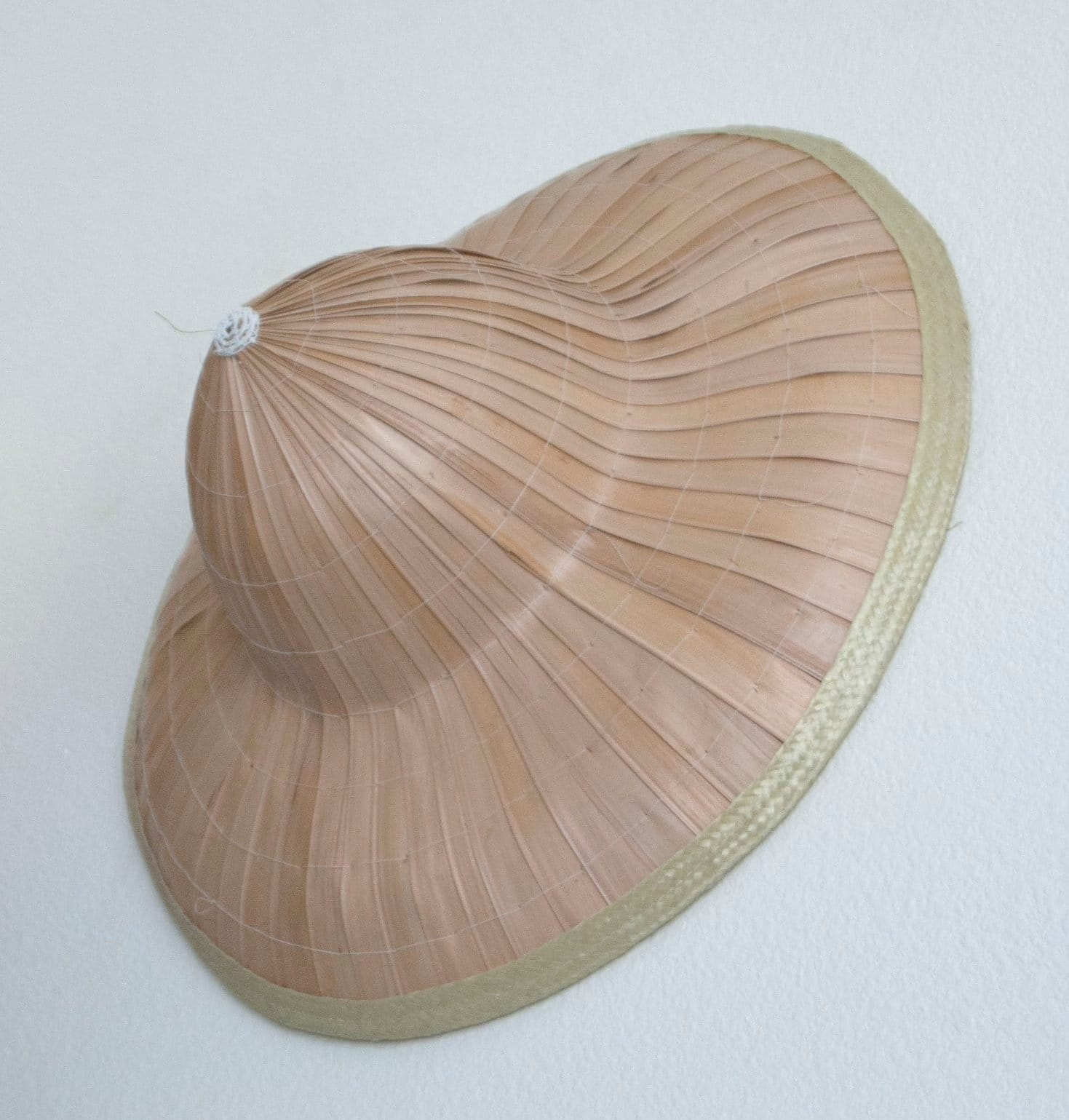
Cat Lauigan
Really, what truly started this project was that I didn't get into grad school. I wanted to go to grad school to explore fiber work, natural dyes, and to get deeper into sound and performance. And so when I didn't get in, I felt like this project would be my backdoor way in. Then I decided, I'll do this project the DIY way, which is what I was familiar with.
I built a website, and with it, I started a mix series, and Matt was the first person on my mix series. You'd see my clothing collections, and then get a monthly mix. I also did a Q&A with each mix at that time. That alcove and the website, actually, was the first iteration of Cone Shape Top.
At this time, we were both experimenting with offline marketing. We did a really bad job with it, but we put up these crudely written signs that said: Cone Shape Top—end of 821 Benton Way—driveway, like a garage sale sign. We were trying to be mysterious, and we didn't say anything else other than that, and we put up those two flyers right on Sunset.

Cat Lauigan
We didn't last long in LA. In 2019, the house we were living in was sold, and we moved to the Bay already feeling like, We're gonna do this [Cone Shape Top]. We're really going to try and realize this right now. And so we found this apartment—it was listed as a two-bedroom, not at all as a commercial space. We saw it and I thought, We have to get it. We have to get that—it looks like a storefront. We finally got the space. I asked my friend Lyric Shen to do an exhibition of their ceramics. Lyric, then, was the first person who activated the space we're in now. This was about September of 2019.
Matt Brownell
At first it was mainly exhibition space, but we did have a little bin in the corner with records and books. We were first imagining it as a project space with a smaller shop element.
Cat Lauigan
Our second project was with Matthew Clifford Green, who runs the Radical Documents label, and we invited him to come and do an installation. He had done all these limited-edition lathe cuts and had hand-drawn on all the sleeves. There was a correlation there with Land and Sea—he had a show at the same time of his paintings, and we were showcasing the sound element. But it wasn't until after lockdown that everything got dialed in.

Matt Brownell
All of this, the current form of our space, was borne out of the time we had to ourselves during lockdown. We started thinking, Okay, this is what we've already done, what do we want it to look like next? How do we get there?
Cat Lauigan
There are a few pivotal spaces for us that were highly influential. The BLESS showroom in Berlin was one. We went there in 2017. It's just in this tiny little apartment, there's no indication of where it is, and you have to go through the front building, and you can't even easily access that back door in the second building. At that point in time, we were being inundated with the logic of social media, and around then is when I felt like the fog started to lift for many people. Social media really didn't feel innocent anymore. Instead I had this longing, and this desire, for just—secret worlds of obsession and discovery.
Matt Brownell
You walk through multiple apartment buildings, and they don't tell you where to go. You're just like, What is this, how do I get there?
Cat Lauigan
And then you go up to the third or fourth level, and you just see this tiny little placard that says: BLESS, and a buzzer. I remember when we first went in there, that was when I was thinking, This is what I want to do. Something involving secrets, or simply requiring more effort to find something, and then when you're inside, it's like all these hidden treasures coming together.

Cat Lauigan
We also talked about another amazing space that is no longer around called 2 Bridges Music & Arts in New York. They were also very highly influential in terms of fusing art and music. So we had these influences and ideas, but we were also really sensitive to the fact that although we had this presence in New York, we had this presence in LA, we were coming back to the Bay Area and basically starting fresh.
And we knew the Bay Area was not either of those places, and it has an entirely different energy, and we needed to be really sensitive to that fact. So during this time of lockdown, we started to do really extensive research of everybody doing things here in the Bay, and so I created these Google Docs of producers, artists, collectives, labels.
It felt vital that we both move with intention. So that time in lockdown, ultimately, was a moment of learning and listening, about people's projects, and then little by little, writing emails. And I sent a lot of cold emails.
Matt Brownell
We weren't open publicly, but we were getting new products in, updating the webshop, and sending out regular newsletters with things we were stocking and doing.
Cat Lauigan
From there, people slowly started to reach out. And then we were beginning to amass a collection of records, books, and art. We'd put it aside and create a stack. And then every month, we'd write and send a newsletter that talked about every single thing that we carried, and we did a lot of research and listened, spending time with all of it, writing our own original copy. We published two sound streams at the same time. One was CST Radio, which came with Q&A, and then Cicada, which was more like experimental transmissions.

Cat Lauigan
At that time, it was still very much a post-Ghost Ship moment. We were in Oakland when Ghost Ship happened, so it felt like we came back to the Bay and then also realized, Okay, these are the spaces that are left. These are the collectives that are left. How can we be a vessel to contribute? To keep that blood pumping here? Because I understood that this was a place that people would leave, and that whoever stayed, they were in it for the long haul—and protective, you know. So trust was an interesting thing to navigate during that time, which already was like a huge collective moment of mistrust towards many things.
Matt Brownell
We had a lot of time to talk about those things and to really move super slowly, and I still feel like we move slowly, and that's intentional. Part of it is that this is our home, and that involves a little bit more thought with what you're inviting in, but it also allows flexibility financially, so we're able to really take our time. You know, I'm pretty shy, and I think it's still super intimidating to open ourselves up in this way. But I did feel a certain amount of confidence in how we were able to move and slowly make sure everything felt good for us, and really thinking: Okay, let's move on to the next step, this is the right move. Of course, not everything is right, and we've made mistakes, but we learn from them.
Part of what makes this project magical for me is that we haven't had a specific goal or vision for where it's meant to be in X amount of time, or a vision for growth or anything like that. That's one of the key factors that has allowed a lot of different things to flourish here that exist outside of what I would have considered for this space. It's also a trade-off. We work our jobs and do this too, so we're open on Friday and Saturday. It's not full-time and we live off the beaten path a bit. So it's not a foot-traffic place, which adds to the element of surprise that we were talking about, but on the financial side, it doesn't necessarily make it ideal for what we might consider like "typical growth," right? So it allows us freedom, and then also creates scenarios where if we want to expand in that sense, we need to think about other big leaps, in different ways.

Matt Brownell
Where we're at now, in this current system, living in a place that's very expensive to live in, is mostly accepting that we're going to be hustling really hard if we want to do the kinds of things we want to do.
But we're always trying to work with people to see if there's another solution. This is borne of this push that's newer for me: practicing mutual aid and witnessing people helping people, communities helping communities, and everyone keeping each other going. I find that really inspiring.
Cat Lauigan
The biggest surprise of running this space is how creative people are when they approach us with ideas. Recently, Ben Rogers from Agnes Martian, a local experimental free jazz outfit that plays frequently here in Oakland, asked us if they could do a day-long program, activating both the inside and the outside of the space. They had four sets of improvised performances, each with clusters of two to three people, all who had never played with each other before. I remember thinking, Oh, that's amazing that just from having experienced this space, they built this performance idea around the space itself. They took into consideration the hallway and outside, which I hadn't even thought of.
Matt Brownell
Creative things like this keep happening here, and so often, they involve an expansive way of looking at the space outside of what I might have considered.
Cat Lauigan
I definitely feel it's not even about the four walls anymore. It's about the energy that's been facilitated here, which has been really amazing to witness.

Matt Brownell
The other thing that just never gets old: folks trusting you with their art and feeling like it has a home here, and feeling comfortable to approach us with their ideas. Every time it happens, it's so humbling. That's a big surprise.
There's a big interest in buying records and learning how to play records. We also offer free DJing lessons and open time to practice. It's been utilized really well. And of course, there's been many younger people who are very adept DJs, who just say, I want to learn to play vinyl.
Cat Lauigan
Lots of people who come here tell their friends, and then their friends tell their friends. I remember one person who had come here to get DJ lessons told somebody else, and we started getting a lot of folks from the Taiko troupe from UC Berkeley, students coming in here learning how to beatmatch. And then they'll look at our stock like, I don't know any of these records. I say, Oh, listen to it. Many of them go on and take a record home. So even though a lot of this music is so niche and specialized, there's people that come in that are very much open to it and interested.
To keep this space going, we put everything into it. That's really it. I give my entire self to this thing.
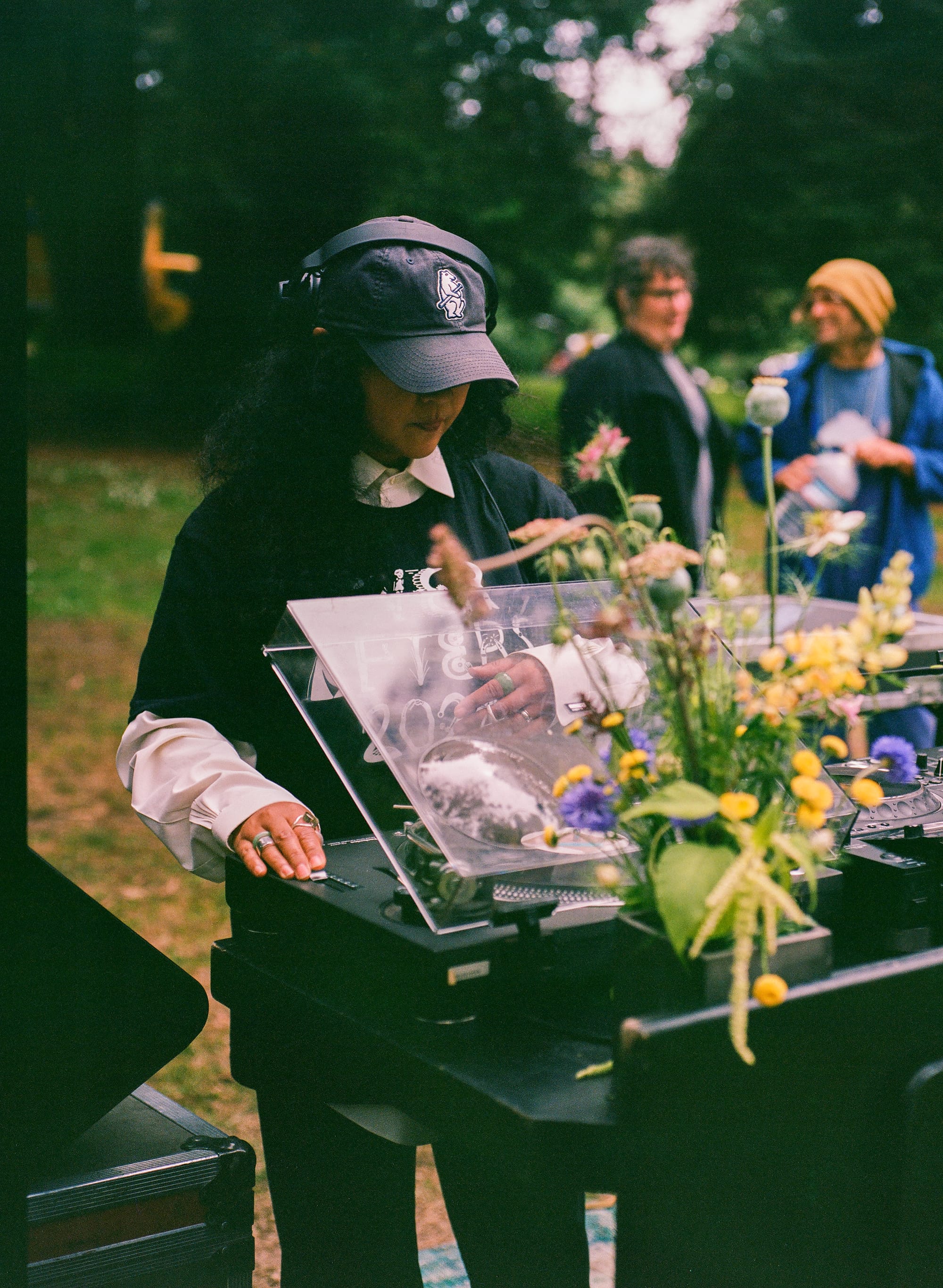
Matt Brownell
Boundaries are something we're still learning about. It's extra challenging working on this as partners, because it's always like, Work meeting? Yeah. But then it's like, We live here too. But we're getting better at saying, I don't want to talk about work right now. Let's set a time for discussing that. And that's been very helpful, but it's still challenging.
Cat Lauigan
Even still, what we receive is more than what we give, absolutely.
Matt Brownell
Yeah, it absolutely feels like that to me. Every person who steps through our space, opens up and engages, looks around and finds something to be interested in, or hears some music and wants to talk about it—each one of those instances, we try to find that connection and figure out how we can relate. Getting folks to open up, and getting myself to open up, you know. I've just had countless wonderful interactions with people that have come through this space. So it's pretty rewarding.
Cone Shape Top is located in Oakland, Calif. near the border with Emeryville. Opening hours are Fridays from 3 p.m.-7 p.m. and Saturdays from 1 p.m.-6 p.m., or by appointment.

